- Home
-
MSCA Registered Maremma Sheepdogs for Sale
- Livestock Guardian Dog Training & Consulting
-
Mini Nubian & Nigerian Dwarf Goats for Sale
-
Maremma & Goat Info
- Prancing Pony Farm Blog
-
Maremma Sheepdog Info
- Maremma Sheepdog FAQs
- Favorite Dog Products
- Housing Maremmas
- Grooming Maremma Sheepdogs
- Feeding our Maremma Sheepdogs
- Vaccine and Parasite Protocol for Our Maremma Puppies
- Keeping Your Maremma Sheepdog Cool in Summer
- Goat Milk for Healthy Dogs and Puppies
- Whelping & Puppy Rearing Info & Supplies for LGD's
-
Goat Care Info
- Dairy Goat Blog
- Bringing Home Your New Goat
- Health concerns of your new goat
- Dairy Goat FAQ's
- Goat Care Articles & Links
- Clicker Training Goats
- Favorite Goat products
- Supplies for Goats
- Feeding Mini & Dwarf Baby Goats
- Housing Does & Kids
- Goat Parasites
- Annual Disease Testing of Goats
- Goat Hoof Trimming
- Milking Dairy Goats
- Milking Nigerian Dwarfs versus Mini Nubians
- Our Dairy Goat Milking Parlor
- Disbudding Mini & Dwarf Goats
- Mini Nubian Ears
- Home
-
MSCA Registered Maremma Sheepdogs for Sale
- Livestock Guardian Dog Training & Consulting
-
Mini Nubian & Nigerian Dwarf Goats for Sale
-
Maremma & Goat Info
- Prancing Pony Farm Blog
-
Maremma Sheepdog Info
- Maremma Sheepdog FAQs
- Favorite Dog Products
- Housing Maremmas
- Grooming Maremma Sheepdogs
- Feeding our Maremma Sheepdogs
- Vaccine and Parasite Protocol for Our Maremma Puppies
- Keeping Your Maremma Sheepdog Cool in Summer
- Goat Milk for Healthy Dogs and Puppies
- Whelping & Puppy Rearing Info & Supplies for LGD's
-
Goat Care Info
- Dairy Goat Blog
- Bringing Home Your New Goat
- Health concerns of your new goat
- Dairy Goat FAQ's
- Goat Care Articles & Links
- Clicker Training Goats
- Favorite Goat products
- Supplies for Goats
- Feeding Mini & Dwarf Baby Goats
- Housing Does & Kids
- Goat Parasites
- Annual Disease Testing of Goats
- Goat Hoof Trimming
- Milking Dairy Goats
- Milking Nigerian Dwarfs versus Mini Nubians
- Our Dairy Goat Milking Parlor
- Disbudding Mini & Dwarf Goats
- Mini Nubian Ears
|
This is part of a longer article I'm working on for my new puppy customers to help them learn how to integrate their new Maremma puppies with their stock. But I don't believe you can address what to do in a puppy's new home unless you first understand what happened - or should have happened - during the time the puppy was with the breeder. Therefore I decided to break this down into a series of blog posts so I can get the first part out there, then I'll come back to write more later, eventually hopefully making an entire page on this complex but important topic.
One of the most common questions we get asked by new puppy owners, whether they are buying a puppy from us or have bought one elsewhere and are seeking advice is "How do I train my puppy to livestock?", followed by "When can my new puppy be left unsupervised with my livestock?" This is a a very complex issue and the answer to the first question depends on many factors such as the temperament, age and developmental stage of the individual puppy, how the puppy was socialized with stock for the first few weeks or months of it's life, the type of livestock it will be guarding, the temperaments of the livestock and whether that stock is used to LGD's or not. The answer to the second question is "As soon as it's possible to do so safely for both the stock and the puppy." I have heard people say to never leave a LGD unsupervised with stock until they are two years old. I very strongly disagree with this advice! That is a good way to end up with a companion Maremma, instead of a LGD. A LGD puppy needs to bond with the livestock it will guard as soon as possible, however it needs to be done safely. And while it's true that in general LGD's aren't fully mature until they are around 2 years old (some even later) in reality a well bred, well started LGD should be safe with at least SOME livestock at a much younger age, and in fact they should not be deprived of this important bonding time with the stock. The trick is matching the right stock to your puppy and setting the puppy and the stock up for success. And that all begins with what happened before you ever brought your puppy home. Then it's your job as a puppy owner to build on that foundation. If you bought your puppy from us, or from a breeder who socializes their puppies intensively with stock like we do then a large part of the work has already been done for you. Our puppies are born near our goats and are smelling, hearing and seeing them from birth, while being kept safe from sharp hooves and the elements in our Puppy Parlor, which sits in one of our goat pastures. This building doubles as a milking parlor and occasional kidding area and hospital/nursery ward for our dairy goats, so our puppies are exposed to the goats from birth. Usually sometime between 3 & 4 weeks old the puppies have outgrown their whelping area and are getting very mobile. At this point they start going outdoors in the attached kennels and other partitioned off areas to meet a few gentle goats and watch the animals all around them. Usually by around 5 weeks old the puppies have free access to goats and chickens and are never away from livestock as long as they live here. They just meet different types of livestock (horses, poultry etc) as they grow and mature. So when a customer asks us when the puppy they bought from us should be with livestock I tell them they already have been since birth, and not to go backwards. The trick is getting the livestock in their new home to accept a puppy, and if the stock has never had a positive experience with dogs then caution will be needed. That is different than adding a puppy to stock that's already used to LGD's and will be addressed in a later post. To learn more about how we socialize our puppies with livestock please see this page below: How We Raise and Train Our Maremma Puppies If you bought your puppy from someone who skips this important early socialization with livestock them I'm sorry to say that you have a lot of work cut out for you and your dog may never reach it's full potential. It requires nature AND nurture to produce a superior LGD. And it requires a lot of work and a carefully planned and set up environment to raise puppies this way and to do so safely for the puppies and the stock. Sadly there are some "breeders" out there who are either too lazy or too ignorant to do things right. These people seem to be breeding solely for money or prestige. They aren't really farmers or livestock producers and if their puppies get any exposure to stock at all it's an occasional visit to the chicken coop or trip out to the barn to see the family horse or to visit a few token sheep or goats on their "farm". Calling this kind of experience "learning livestock" is like watching a cooking show and calling it "learning to be a chef". There is a "critical window" of learning for puppies that lasts during roughly the first 16 weeks. This is a scientific fact, not an opinion. There have been many documented studies to prove this. To learn more about these critical learning periods see these links: Puppy Developmental Stages Socialization and the Race Against Nature The Sensitive Period and Socialization in Puppies and Kittens Neuroscience and Brain Mechanisms of Critical Periods in Puppy Development Critical Periods in Puppies Revisited Puppy Socialization Starts with the Breeder The Puppy Culture DVD and early socialization in Puppies Now admittedly most of these articles are about companion dogs but the same science applies to Livestock Guardian Dogs. In fact, I would go so far as to say that the early socialization period in puppies is even MORE critical for LGD puppies than companion dogs. We are taking a predator species, dogs, and asking them to bond with, live peacefully with, protect and perhaps even lay down their lives to protect one or more other species - prey species. It requires more than "good genetics" for a LGD puppy to live up to their full potential. It requires nature AND nurture to produce the best LGD's, and anyone who tells you something different is ignoring science. And any LGD "breeder" that ignores this vital early learning window is doing a great disservice to their puppies, their customers and the livestock they will one day protect. If puppies spend their first 12-16 weeks living with livestock they are learning the "language" of the stock, much like a child immersed in a bilingual home naturally picks up both languages and does so more easily than any adult ever could. If puppies instead spend this time inside a house, on a patio or hanging out by a swimming pool then they are learning to be companion dogs, no matter how many acres the "farm" is or how many predators patrol the outer edges of the property. What matters is what the puppy directly experiences during these first 12-16 weeks and he can't learn to be a LGD if he's not with livestock, period. When you take that puppy that was raised in a companion setting and drop him into a barn full of goats, sheep or chickens he will feel like Dorothy did when she landed in Oz. And then he will spend a lot of time trying to get back home to Kansas! These puppies invariably have a harder time bonding with stock and some never really do. And it's not the dog's fault or the owner's fault. That is 100% on the breeder. What's more, puppies raised with little to no livestock interaction haven't learned proper behavior with stock during the most effective learning period of their lives. It's a simple fact that a peck on the nose or a head butt from a goat or sheep is a lot more impressive to a 15 lb puppy than a 50 lb one. And a goat that calmly ignores a tiny puppy's attempts to bite its ears is a much better teacher than a goat that yells and screams when a 40-50 lb puppy attempts the same thing. The first goat taught the puppy that this kind off silly play doesn't pay. He soon gets bored and finds something else to do. The second goat taught the puppy a very exciting new game and he will not likely give that game easily, if ever. Better to never let the puppy learn that game by putting the right stock with the puppy at the right age. And that's NOT when the puppy is 3, 4, 5 months old or older! The RIGHT livestock, introduced early in the puppy's life by the breeder, can teach the puppy manners while also giving the puppy positive interactions with stock so that the puppy learns to respect the stock but also see these animals as his friends. This is what "bonding to stock" is all about. Positive early interactions for both the puppy and the stock. There's a specific type of "puppy trainer" stock that works best: steady, calm and gentle but not prone to either getting overexcited or overly aggressive when the puppy tries to engage in rough play, as all puppies will eventually do. A good breeder understands the vital role the livestock has in training their puppies and employs specific trustworthy stock just for this purpose. But if the puppy gets NO (or little) exposure to stock during this critical window, or exposure to the wrong kind of stock (either aggressive stock or flighty stock) then you are much more likely to have problems with puppies and adolescent dogs that engage in rough play and even aggressive behavior with stock. And in my opinion a breeder that raises puppies in such a manor is highly unethical and should just pick a companion breed. But these breeders are not going to give up their breed, either because they don't realize the harm they are causing or because the just don't care. Therefore it's the potential puppy owner's job to educate themselves before buying a puppy. Don't just look for a cute puppy or for a breeder who has pretty dogs, even beautiful dogs with correct conformation, impressive pedigrees and fantastic hip scores. Are those dogs actively LIVING with and guarding livestock, and if so, what kind and how many? And I don't mean the stock is in a pen and the dogs patrol around the animals. If that's the case then to me that's a huge red flag that the dogs can't be trusted with stock. And if the parents can't be trusted then the puppies likely won't be trustworthy, either. Also, are the PUPPIES themselves living with livestock? And if so what kind and at what age were they put with stock? As stated in the articles above the longer you wait to socialize the puppy the more permanent damage you're causing. You might be able to train a puppy that missed that critical window but you'll never truly make up for what the puppy missed. You may get an "OK" LGD but you won't get a "great" one. And I don't know about you but "Ok" is not good enough to guard MY animals! So if the breeder can't show you proof and lots of it, in the way of lots of photos and videos of their parent dogs and their puppies WITH livestock from an early age, as well as the accommodations they've made to maximize this vital socialization with livestock for their puppies then I would highly suggest you find another breeder. To be continued.....
2 Comments
We often get questions from people wanting to know what the difference is between does, bucks and wethers and which is the best choice for therm. What you choose depends on why you want goats in the first place. Read on to find out which is the best choice for you. Bucks Bucks are intact males. They have one purpose and one purpose only - to breed the does and make more goats! They do not make suitable pets, especially for children. While they aren’t necessarily aggressive they are big and strong and can be hard to handle when in rut. (Rut is the buck equivalent to being in heat.) They can’t be kept with does except during breeding season so they will need their own enclosure and another buck or a wether for a buddy. (Since goats should NEVER be kept alone.) They have an extremely offensive odor, especially during the breeding season. The reason they smell so bad is that they constantly urinate all over themselves, on their faces, bellies, legs, beards and yes, even in their own mouths! They have longer hair than does and wethers, which makes the stench even worse. They will also urinate on any and everything within reach, including you sometimes, if you stand too close! (Ask me how I know! 😩😆) The smell is really hard to get off once you touch them, so most buck owners keep handling them to a minimum and keep them far away from the milking does (outside of breeding season) and milking area so as to not taint the milk. Sometimes they get urine scald from all of that self-inflicted nastiness and need to be bathed and treated with diaper rash cream. That doesn’t exactly make for a creature that you want to pet and snuggle with so it’s really only recommended to have a buck if you have several does that you breed every year. If you breed but just have a couple of does you’re better off using buck stud service than housing one of these stinky boys of your own all year round! Does Does are females. They are smaller than bucks and do not have any kind of offensive odor. They are generally sweet, calm and easy to handle, even by children. They are popular as 4H and FFA projects but what they are best suited for is breeding and milking. They will come into heat about every 3 weeks during the breeding season and may signal this heat by calling out and play fighting with the other goats. Once bred they will have babies in 5 months and can be milked for several months after that. Most well cared for dairy does can be bred to have babies every year and can be milked until 2-3 months before they have their next litter. Of course you don’t have to breed your doe but it’s normal and healthy to do so. That’s what they were bred for! They do also make great pets and many people choose them for that purpose, but they cost more than wethers so you need to keep that in mind. Wethers
Wethers are castrated males. They aren’t aggressive and don’t get as big and bulky and hairy as bucks and they have no bad bucky odor or disgusting habits! They also don’t come into heat like does so you don’t have to worry about them yelling for a date during breeding season. 😆 They make great companions for either does or bucks and good weed eaters. But what wethers really excel at is being sweet, loving, entertaining pets. They are also less expensive than does or bucks so you can usually purchase two wethers for less than the cost of one doe. If you don’t want to milk or have baby goats and just want fun and adorable pets I highly recommend wethers! Pneumonia is one of the top two health threats to goats. (Parasites being the other.) Here at Prancing Pony Farm we strongly believe that all goat owners should be educated on the signs of pneumonia and have the proper medications on hand to treat it, or a plan for getting them IMMEDIATELY if a goat is showing signs of Pneumonia BEFORE they bring home their goats. Goats can literally die of Pneumonia in hours so time is of the essence! Stress is what brings on Pneumonia and this includes stress from weather (rapid hot and cold temperature changes, especially), weaning and going to a new home. If your goat is standing off by itself, not eating or acting off TAKE ITS TEMPERATURE IMMEDIATELY. A normal goat temperature is 101.5 - 103.5. If the temperature is higher or below 100 that's a sign of pneumonia. The goat may or may not have a snotty nose or raspy breathing. Coughing can be a sign but it's more rare. (Goats do cough a lot.) If you suspect pneumonia begin antibiotics and B Complex shots IMMEDIATELY. We treat with Resflor Gold (prescription only), 5 days in a row, plus B Complex shots daily and VetRX drops and Vitamin C tablets. But you should consult your veterinarian for the best drug to use. A Hard LessonThe reason I stress being alert for signs of pneumonia in goats is because I’ve learned the hard way what happens if you don’t. Honey (Jardine Meadows Honeysuckle) was one of our first Mini Nubians that we started our farm with. She belonged to my son, Noah, and was one of his two favorite goats. Noah adored Honey and spent many hours playing with her and his other favorite doe, Anna. One night I heard her making a funny raspy breathing sound and went to check on her, but got distracted by one of my grandchildren, who was visiting my house. In the busyness I forgot about Honey and didn’t remember until the next day, when I found her dead in the barn. It was a very devastating loss for Noah and for me to lose her so suddenly. I didn’t even know what had happened to Honey until a few days later when I noticed one of her sisters, Poppy, standing off by herself with her head hanging and a snotty nose. It was Friday evening when I found her and I immediately called the vet, only to be told “We don’t do after hours emergency calls for goats. Bring her in Monday.” I've had horses for decades and vets always make emergency calls after hours so I was totally shocked and saddened that the vet wouldn't make an emergency call to see my goat. I could tell that Poppy was too sick to wait so I got on the Facebook Mini Nubian Breeders goat group, described her symptoms, and some very helpful people told me that it sounded like pneumonia and she needed antibiotics and B Complex immediately if she were to live. Luckily at that time you could still buy a few antibiotics OTC in California so I rushed to Tractor Supply to get what I needed to save her until I could get her to the vet, barely making it before they closed. I rushed back home, gave her the meds (LA 200 and B Complex) and prayed she would make it through the night. She did, but she was very sick. The next day I called the vet and convinced them to let me bring her in to see the doctor on call. They confirmed Pneumonia and gave me the proper antibiotics (Resflor Gold) to treat her. I bought the entire bottle since in my overnight research I had learned that this would not likely be my last case of pneumonia. Indeed a few days later the third sister, Clover, got sick. Both girls were touch and go for a while but luckily I had the meds I needed and was able to save them. A few months after Honey died the breeder we got her and her sisters from had another beautiful doeling available. She knew how devastated we were over Honey's death so she sold us Jessie. Jessie and Noah were best friends from day one. She was rejected by her mother and didn't seem to know she was a goat for a very long time. She would follow Noah around as he fed the horses and other goats, watching the goats like they were strange creatures and getting into everything. Then she would hop into his lap for her bottle. She was more than a bit naughty but so adorable and beautiful that she soon became both Noah's and my favorite goat and the farm mascot and she still holds that position today. Then one day the fall after she was born I noticed Jessie was not her usual naughty self, but was very lethargic and quiet. I took her temperature and it was crazy high - 107! I freaked out and called the vet I had used before, only to be told that they no longer treated goats. I called every vet in the area and no one would see her. Either they didn't see goats or didn't have appointments available. (The hard lesson I've learned is that goats aren't seen as valuable in a cow dairy town.) Again, it was Facebook to the rescue and again, some very kind people coached me through and I was able to determine that she had pneumonia. Luckily I already had the medications I needed on hand so I began treatment immediately and was able to save our beautiful girl. Since that time I've done a lot of research on Pneumonia and had several more cases of it, as well. I learned that goats are very susceptible to stress and that stress lowers their immunity, which can cause pneumonia. One of the biggest stressors in our particular area is weather. We have very rapid hot and cold temperature swings in the spring and fall. Goats can't regulate their body temperatures quickly so the stress of that can lead to pneumonia. We always have at least a few cases of pneumonia these times of year. Sometimes a lot of them. One year I had what I dubbed "The Pneumonia Storm" with 16 cases. It was awful and took me 2-3 hours a night and several bottles of antibiotics to treat them all. Sadly, I also lost 2 baby goats to Pneumonia one year when I didn't recognize the signs quickly enough. We had a very unseasonable late "spring" that year, with the crazy temperature swings lasting into the summer and I just wasn't expecting pneumonia a few days before the 4th of July. With the first baby, a 9 week old doe I wasn't sure what had happened. When I found the second dead baby, a 9 week old wether, a few days later I literally burst out crying in the barn. It was so heartbreaking. But I took the baby to UC Davis for a necropsy, which confirmed what I suspected. Pneumonia. I just never would have expected pneumonia at that time of year but at least i knew what the enemy was, so I could be on the alert. Sadly I've lost a few babies here and there to pneumonia, again, when I didn't see the signs soon enough. (I haven't lost any adults but I think that's because babies are harder to keep up with and more fragile.) It's a REALLY sneaky disease that can come on so fast! They can literally die within hours so you have to be diligent in watching them. But usually I'm able to monitor everyone very carefully and catch any cases of pneumonia before it's too late. I walk through the pens several times a day, watching for anything amiss. What I look for is anyone standing off by themselves, not eating and not acting normal. If I see that kind of behavior I check their temperature. If they have a fever higher than 103.5 or lower than 100 (very bad!) I begin treatment immediately. I use Resflor Gold for at least 5 consecutive days as well as B Complex shots and Goat RX drops and vitamin C chewables With this protocol I can usually save them, so long as I catch the signs in time. But time is of the essence. Unfortunately Pneumonia requires antibiotics to cure and ALL antibiotics are by prescription in California. And, as I learned the hard way, not all vets treat goats and if they do they may not see them after hours, like they do horses and cows. So that's why I tell all new goat owners that you should either have the medications on hand to treat them if they get sick, or have a plan for how you can acquire them if you need them. More Information on Pneumonia in Goats
This event actually happened in March 2020 and I posted it to my FB page and some goat groups, but didn’t think to blog about it, I guess because I was too upset at the time. But I thought I should add it here because this is a part of goat breeding that most people don’t think about or talk about, but I think it’s important to discuss so that we can all learn from these sad events and do better in the future for these animals that are entrusted to our care... I lost a baby goat today. When you have as many babies born as I do you’re going to lose a few each kidding season and he’s not the first one I’ve lost this year. But he was a really special little guy - a bottle baby, which I rarely have, very sweet and friendly, healthy and strong and beautiful, and the first buckling of my own breeding that I’ve liked enough to want to keep. He was one of my favorite kids of the entire nearly 70 kids born this year.
He seemed perfectly fine earlier in the day when I gave him his bottle, then I heard him yelling and went to check on him. He was in obvious pain. I’m not sure what was wrong with him but possibly Enterotoxemia. I began treating him for that immediately since that’s all I knew to do. It didn’t help. In less than 15 minutes he was dead and I am just heartbroken. When people ask me why my goats are “so expensive” this is why. Because I work so hard to raise healthy, happy, high quality goats. But sadly you can do everything “right” - give them the best hay, organic minerals, proper medical care and love and still you’re going to get your heart ripped out every so often. You’ll save some from difficult illnesses that most people would have given up on and then tragically lose other babies that you didn’t even know were sick. 😢 And why do I continue in this business despite the heartbreak it can bring? Two reasons. Because I love goats more than any other animal besides dogs. They’re unique and special creatures that bring me joy every day and I’ve adored them since I was a kid. And because I love sharing these wonderful creatures with other families like the lovely family that came earlier in the day to buy two wethers from me. I want to breed healthy, beautiful babies that can bring joy and happiness to others, be it does for milking and making cheese or wethers for pets. They’re all special and seeing how excited the families are when they take their new babies home makes me so happy. But some days it’s really hard to be a goat breeder. This day started out so great, but ended so awfully. I hope tomorrow is a better day all around. 😢 Last fall I had a buyer in Massachusetts named Leanne who contacted me wanting to buy 6 goats, 3 from the fall season and 3 from the 2020 Spring season. I told her I was more than happy to sell her the goats but that she would have to arrange the transportation since I knew nothing about how to go about that. At first I was somewhat apprehensive about the whole deal, having heard some real horror stories on goat groups - goats getting “ lost” (stolen), not being properly taken care of and even dying. I’ve wanted to buy goats from out of state myself but was just too nervous about the idea to look into it. But this brave woman was up to the challenge so I decided to go for it! She told me she had hired Brian from Blarney Heights Farm Transportation. Finally I checked out their website and FB page and realized that these guys seemed to be very professional and above board, DOT licensed, and to come highly recommended by a lot of people. Later Leanne told me that she had already had some goats shipped by Brian from other breeders and that everything had gone really well. I started to relax a little!
Two of the goats Leanne purchased were Nigerian Dwarf kids so they had wait until they were weaned in early January before they could go. The other was a pregnant Nigerian Dwarf doe. There were tattoos and official USDA 840 microchips for Scrapie ID to be done by me since goats can’t be shipped out of state without them. Boy was I ever glad I had gone to the trouble to register with this mandatory USDA program and get my Flock and Premise ID’s when I started breeding goats! Health certificates were also required and a blood test for brucellosis for the doe. All of that was handled excellently by Dr Schmitt at King’s Veterinary Services in Lemoore and his excellent receptionist, Faye, who made all the calls to the Massachusetts state veterinarian to make sure the goats were in compliance with their laws when they arrived. Finally the day came and my son and number one goat wrangler, Noah, and I took the three goats to the meeting place at Harris Ranch. Brian was very nice, extremely professional and his rig is amazing! I’ve had horses transported many times but never goats, so I was very impressed with how he had things set up to accommodate smaller animals. They had very secure stalls so that each person’s animals were in their own pen with food, water and fresh bedding. I knew my babies were in good hands! Brian and Leanne kept me informed of how the goats were doing along the way and they arrived safe and sound in Massachusetts about a week or so later. It may have been a bit of culture shock for them, going from California to Massachusetts in January, but they did great! Leanne had goat coats and a nice, warm barn waiting for them, and luckily the weather was unseasonably mild that week. I couldn’t imagine a better experience. I know the next set of three goats (two Mini Nubians and a Nigerian Dwarf) that will be going to Leanne in a few months will do great. And what’s more, I’m now shopping for breeding stock across the country that Brian can bring to me! That will be a dream come true because there are a lot of nice goats out there that REALLY need to be in my barn, but up until now I didn’t know of anyone I would trust to transport them to me. Now all I have to worry about is finding them! Milking Our Mini Dairy GoatsThis is how we milk our goats and the products we use. There is no one “right” way to milk but this is what works for us. We’re just sharing it here for those who are new to milking goats. Feel free to adapt it to your needs or to scrap the whole thing and do what works best for you and your does. Happy milking! 🐐🐐🐐🐐🐐🐐🐐
Production differences between Nigerians and Mini NubiansMilking goats is child’s play!Milking with my Simple Pulse is so simple a child can do it!Useful Companies & Products for Milking GoatsBefore you bring home your new goats you should be prepared with all the supplies you’ll need to take care of them. Below is a list to get you started!Basic Supplies
Medical, Grooming & Nutritional supplies
It’s always exciting when a new kidding season starts and this year is no exception. We did have a few does kid in December, including one litter on Christmas Eve, so it hasn’t been THAT long since babies were born here. And we do have still several fall kids in the barn but still - more baby goats means more fun! The “count” starts over. New year, new tattoo letter! For those that don’t know the tattoo letter is the letter you see before each kid’s number on our for sale page. Tattoos or microchips are how registered dairy goats are identified for registration purposes. And they (or official USDA microchips) are used for the legally required Scrapie ID purposes instead of ear tags. Each goat has a herd tattoo and a numberletter combination assigned. The herd tattoo goes in the right ear and the number-letter sequence in the left. Even if goats are microchipped instead of tattooed by the breeder they are assigned a tattoo by the registry. (We much prefer to microchip whenever possible.) And the tattoo numbers make a great way to identify the kids. This year the recommended letter by all goat registries is M so the kid count starts over at M1, M2, etc! Well apparently our first doe to kid this year wanted to bring the new year in with a bang and use up the first 5 numbers in one fell swoop! On January 10th two year old Nigerian Dwarf doe Lotte (Miracle Kids CC Little Lotte) gave birth to FIVE healthy babies! I knew Lotte had looked huge but she’s a pretty small doe and this is only her second freshening so I was a bit surprised at her having 5 kids! The kids were four bucklings and a doeling ranging from 1.8 lbs to 2.7 lbs. Lotte delivered them all by herself with no complications. The babies are doing really well and Lotte is being a very attentive mom to all five kids. People often express shock at a goat having 4 or 5 (or even 3) kids but actually quads and quints are pretty common with Nigerian Dwarfs and (to a lesser extent) Mini Nubians. Even 6 is not unheard of and 7 is the recently set world record. Three is probably the “average” litter size and no big deal. Most does handle birthing and feeding three kids like it’s nothing, unlike humans who would be pulling their hair out at the thought! Here at the farm we usually end up with several litters of 4 or 5 kids per year. It is a lot more work but is very exciting. Many breeders immediately pull one or two kids from a litter of quads or quints, only allowing the doe to feed 2 or 3 of her kids. They do this for various reasons and each breeder has to decide what works for them and their goats. Here at Prancing Pony Farm we prefer to dam raise kids whenever possible and large litters are no exception. We usually only completely bottle raise a kid if the doe outright rejects it or there’s some other issue. (Last year we had a KID reject his mom. Go figure!) Otherwise we leave the kids with mom as we feel it’s in the best interest of the kids and does, it’s less work for us and we prefer the personalities of dam raised kids over bottle babies, at least on a large scale. (Bottle babies can be VERY pushy and are not necessarily friendlier than dam raised kids.) As we’re fond of saying, we do have a few goats that were bottle babies, and we love them very much, but a barn full of them would drive us bonkers, lol. We find that some of our does can completely feed 4 kids on their own and they can even do a pretty good job of MOSTLY feeding 5. But you do want to be sure that all the kids are getting enough to eat! Instead of pulling kids what we do is we leave the kids with the doe if she accepts them all. Then we go in once or twice a day starting the first day and offer a bottle to each kid. Some kids are obviously hungry pretty quickly and take to the bottle right away while others fight it tooth and nail. We just keep offering every day for a while and see what happens. Sometimes the kids never take to the bottle and the doe seems to be able to feed them by herself. This is more common with quads. But sometimes, especially with quints, one or two of the kids will decide they like the bottle eventually. Sometimes it’s a tiny one and sometimes it’s a bigger kid who knows a good thing when they see it! Either way by giving a supplemental bottle a couple times a day to one or two kids it ensures that all the kids have enough milk but they all also still get to nurse and be with mom and live a normal baby goat life, which, we feel, is very important. We use fresh raw goat milk from some of our other does in the bottles. Never goat formula! Many breeders consider that stuff to be very bad for goats and we agree. Baby goats should drink goat milk, if at all possible. We have mixed goat milk with whole cows milk from the store in a pinch and have bought goat milk from a friend when we didn’t have enough on hand. One year we had a lot of large litters and only one extra doe in milk so we were unprepared. It was rough! Now we try to stagger breeding so we always have a few heavy producing does in milk before the next bunch kid and we also stockpile frozen goat milk and colostrum for later use. Usually we offer the supplemental bottles for 5-6 weeks, until the kids are eating hay really well. Then we wean them off the bottles so they are just nursing from mom and eating hay and minerals. (Babies that are ONLY getting bottles are bottle fed until 9-16 weeks, or longer, but if they are also nursing from their mom we figure they can be weaned off of bottles a bit sooner.) We find this method works really well for us because the kids get enough milk but aren’t totally dependent on us like bottle babies would be. It’s kind of the best of both worlds! So far Lotte’s kids aren’t showing much interest in the bottles and are happily nursing, but we’ll keep offering. We often find that does have more trouble feeding the kids on their own when they have several bucklings in the litter than when they mostly have doelings. Those boys like their milk! So much that they will often sneak nurse from other does besides their own dams. The biggest danger in a large litter is that the big, strong boys will push away any girls or tiny boys and those kids won’t get enough to eat. If you’re not paying attention they can die from starvation or malnourishment so we watch them very carefully. Lotte has 3 big boys and a tiny girl and boy so it’s the little ones that we pay special attention to when we offer the bottles. Time will tell who, if any, take to the bottles but so far they are all doing great!
We prefer to feed all of our animals as healthfully and naturally as possible. We avoid most commercial feeds because they are usually full of soy, GMO's, by-products, chemicals and other questionable ingredients. We drink the milk from our goats and eat the eggs from our chickens so we don't want this stuff passed on to us. Furthermore we want our animals to live a long and healthy life and we feel that avoiding certain feed stuffs will help them do so. All of our goats get:
Filling the hay barn once or twice a year is a big, multi-day job!The mainstays of a healthy goat diet: high quality, green, leafy hay, high quality loose minerals and forage.Additional food:Grain: We don't feed much grain since goats are ruminants and get most of what they need from high our quality alfalfa (and grass or forage) hay and free choice loose Crafts-Min minerals. Roughage (hay, trees, etc), not grain, is what makes milk and keeps goats healthy, so that's the foundation of their diet, while the minerals balance everything out. We do give some grain to does on the milk stand. Our bucks don’t get any grain. Grain is not good for male goats as most grains are high in phosphorus and can cause urinary calculi! Please, don’t feed your male goats grain, especially pet wethers. It can lead to a very sad end. (Alfalfa is ok for bucks and wethers as it actually helps prevent UC. Just don’t overfeed it or they can get too fat!) We have not found a need to feed our bucks grain even during breeding season because they get everything they need from alfalfa hay and CraftsMin loose minerals. We don't like to use commercial feeds because of all the GMO's, soy, etc. We also refuse to use any commercial feed that doesn’t use a fixed formula. Therefore we feed either whole oats or rolled barley (or both) to does on the milk stand, nursing does and kids and as an occasional treat to dry does. Sometimes we add a little BOSS (Black oil sunflower seed) for variety. Electrolytes: When it’s really hot out we give electrolytes to keep the goats hydrated, especially does in milk and young kids. Our brand of choice is Sheep and Goat BlueLite, which we get at Premier 1 Supply. Treats: We use large alfalfa/grass hay pellets or Manna Pro Saddle Snacks horse treats from Tractor Supply as a treat and the goats and horses love them. If you see the goats or horses mugging my pockets they are looking for these treats! 😆 Some of our goats also enjoy things like animal crackers, raisins, apples, mandarin oranges and such. And a few will knock you down for a banana. We feed all our overripe bananas to them, peels and all. ☺️ That’s the basis of a healthy goat diet: sweet and simple, and relatively inexpensive, when you’re only feeding a few goats, at least! 😆 And in exchange for these food we get plenty of sweet, delicious milk, adorable babies and goat kisses! 🐐🐐🐐🐐🐐 If you’re purchasing goats from us this article is to help you prepare for your new arrival before you pick them up. If you live in another area of the country and are getting your goats elsewhere this article may still be beneficial to you but keep in mind that some things mentioned here are regional, like types of hay commonly available or shelter appropriate to the weather of the area, and some things are dependent on the types of goats being discussed. We raise Mini Nubian and Nigerian Dwarf Dairy Goats on our farm in Central California, where winters are mild but summers are brutal and where alfalfa hay is the most economical and readily available thing to feed livestock of any kind but grass and browse are almost unheard of. The info we are providing here is based on what we do with our herd, based on our geographic area and their needs. If you don’t live in this area then adapt it to what works for you, but if you do live here and especially if you are buying a goat from us this article should help you be better prepared to start this fun new adventure! Things You'll Need Before Bringing Your Goats Home:A Goat Buddy Goats are herd animals so the first thing your new goat needs is another goat buddy! A dog is not an appropriate substitute for another goat because a dog is not a herd animal, like a goat is. A horse or pony is better than nothing but really, goats need to be with others of their own kind, that think, play and act similarly. Your goat won’t be as happy and healthy by itself as it will be with another goat. It may be stressed and stress leads to illness and sometimes death in goats. It will be overly dependent on you, often yelling for attention all the time. And you will miss out on the joy of seeing the goats playing together. So do your goat and yourself a favor and make sure you have at least two! Or 3, or 10! ☺️ Proper Housing Goats can handle cold weather but they can’t handle excessive heat or too much rain, so appropriate shelter is a must. (They are susceptible to both heat stroke and pneumonia. And they HATE rain!) This can be as elaborate as an enclosed barn or a run in shed or as simple as a large dog house or a calf hutch. Our bucks live outdoors with large calf hutches and Dog Igloos for cold and rainy weather and a tall open horse shelter for shade in summer. Our does and kids live inside a large horse barn or in paddocks with large calf hutch shelters. We use both Polytec and Calftel hutches and love them because they are easy to move around, especially the Polytec ones because you can just roll them! In winter time they also have large dog houses and small calf hutches inside the barn for extra warmth. We provide Premier 1 Heat Lamps in the calf hutches during kidding season in the coldest months. Since our barn is a very open and tall horse barn we also use Shade Sails around the barn and paddocks in summer to keep out the heat and tarps in the winter to keep out rain and wind. We deep bed the stalls during winter and kidding season with hay, straw or pine shavings but we keep the floors bare in summer and rake daily. Protection from Predators Goats are at high risk from predators and even horned goats can’t protect themselves adequately from such attacks. I highly recommend you have a Livestock Guardian Dog in place the minute you bring home your goats. Even if you don’t have coyotes, mountain lions and bears you may have stray dogs as well as human predators who would hurt or steal your goats. The first line of defense is a properly locked up and secure pasture or barn. The second defense is a LGD. If you don’t have a LGD then lock your goats up tight inside a completely enclosed barn at night and pray. Seriously. You need a LGD! You can’t undo a dead, injured or stolen goat. It’s not a matter of “if” but “when” something will happen to them if you don’t have a LGD. We use and breed Maremma Sheepdogs and we have two kinds of people who buy our puppies. The ones who are planning ahead and get a LGD before they have a predator problem. And the ones who get one after they’ve lost stock to predators or theft. You don’t want to be the second kind. 😢 And a LGD is NOT a collie, German Shepherd or any other herding breed or non-LGD breed. It is one of several breeds of dogs bred specifically for thousands of years to bond closely with and protect livestock. We use Maremma Sheepdogs and highly recommend them but at least make sure you get a dog that’s ONLY a LGD breed, not a non-LGD breed or worst of all, a mix of LGD and non-LGD. THAT is a disaster waiting to happen! Proper Transportation You should bring a medium sized dog crate to transport your goats home in, as well as a leash and collar, if you think you’ll need to get them out along the way. You may not need the large crate when they are tiny babies but you will eventually so if you don’t already have a smaller crate I would just go for the biggest one you can find now. We transport even our biggest bucks in a large dog crate in our mini van! *Please note that the the size crates we have and use are these two:
*Transporting more than one goat in the same crate is perfectly fine, so long as it’s big enough, and they’ll probably be happier together. *The average weight for 9-12 week old Nigerian Dwarf kids is about 15-25 lbs and the same age Mini Nubian kid is roughly 25-40 lbs, so use that as a guide to cage size. Feeding Supplies First you’ll need a hay feeder. There are lots of styles to choose from, bought and homemade. Goats need basically free choice hay but they are notorious for wasting hay so I wish I could tell you I have found the perfect feeder but I haven’t. I just try to rescue the wasted hay before they use it for a toilet and feed it to my horses, who eat anything! 😂 You’ll need a good sized water bucket but not so deep that baby goats will fall in and drown. I prefer automatic ones so I don’t have to always fill them but I check them daily to make sure they’re working properly and to clean them if needed. A mineral feeder of some sort to put the free choice loose minerals in is vital. We use big ones from Caprine Supply that hold about 20-25 lbs at a time, but if you just have a couple of goats a small one will do. Just make sure they can’t knock it over and waste those minerals and try to hang it high enough that they don’t decorate it with goat berries! If you feed grain you’ll need feed buckets but it’s mainly milking does that need grain, not pets and dry goats. But having a few feed buckets or pans on hand helps when you need to entice the goats into the pen! Simple alfalfa pellets or plain oats will do for this. Other things you'll need will be listed in another post and will include: |
AuthorHi I'm Kim. I love all animals but goats and dogs are my favorites so I built a business around them, breeding miniature dairy goats and Maremma Sheepdogs. I love sharing my passion and knowelege of these amazing creatures with others. Archives
June 2022
Categories
All
|
"Above the arch there was a lamp, and beneath it swung a large signboard: a fat white pony reared up on its hind legs. Over the door was painted in white letters:
The Prancing Pony by Barliman Butterbur."
~ from The Fellowship of the Ring: Being the First Part of The Lord of the Rings.
|
We are located in Lemoore, California.
|
Amazon Disclosure: Prancing Pony Farm is a participant in the Amazon Services LLC Associates Program, an affiliate advertising program designed to provide a means for sites to earn advertising fees by advertising and linking to amazon.com.
|





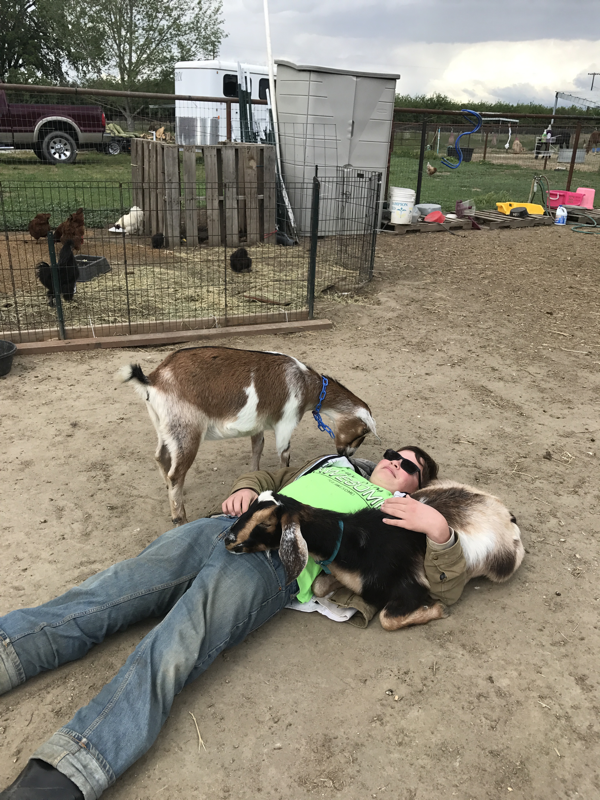
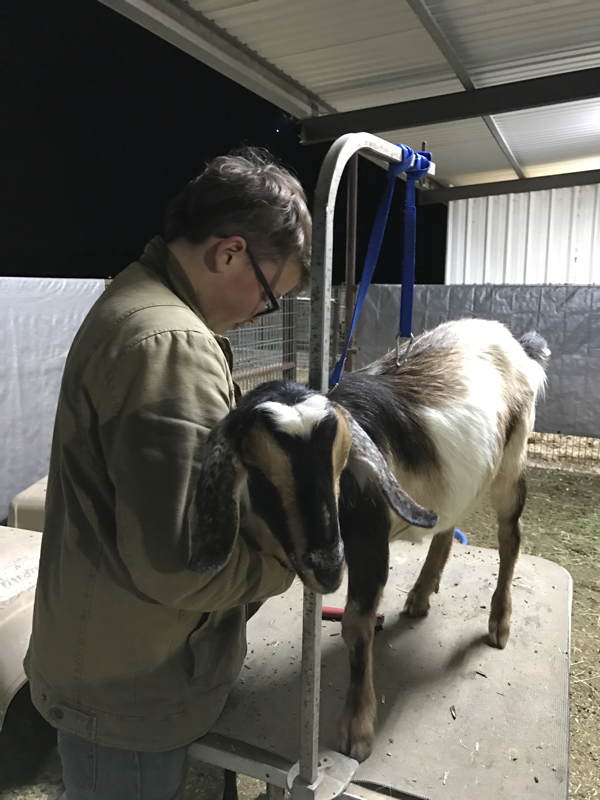


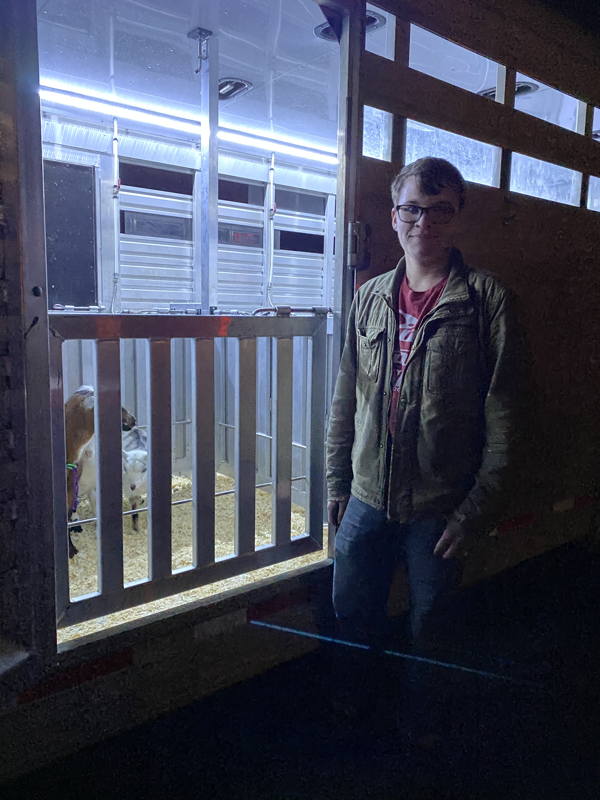




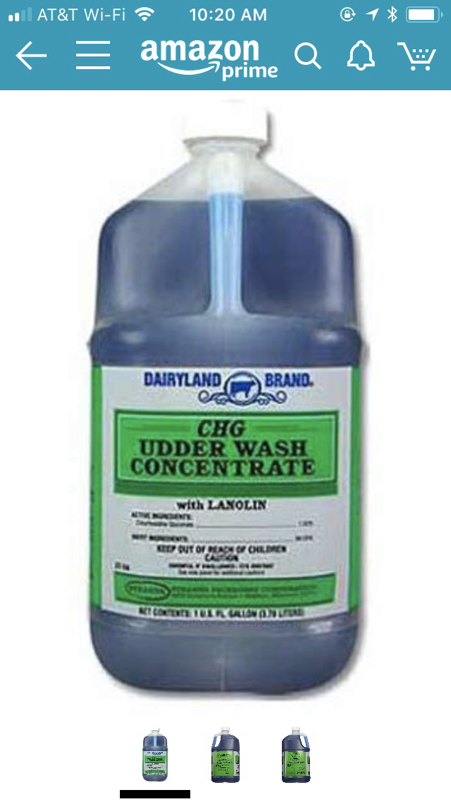



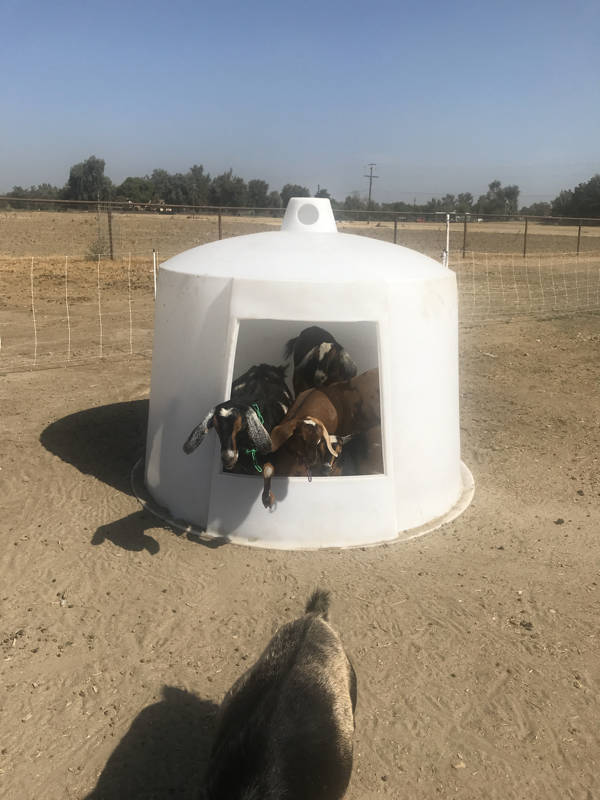
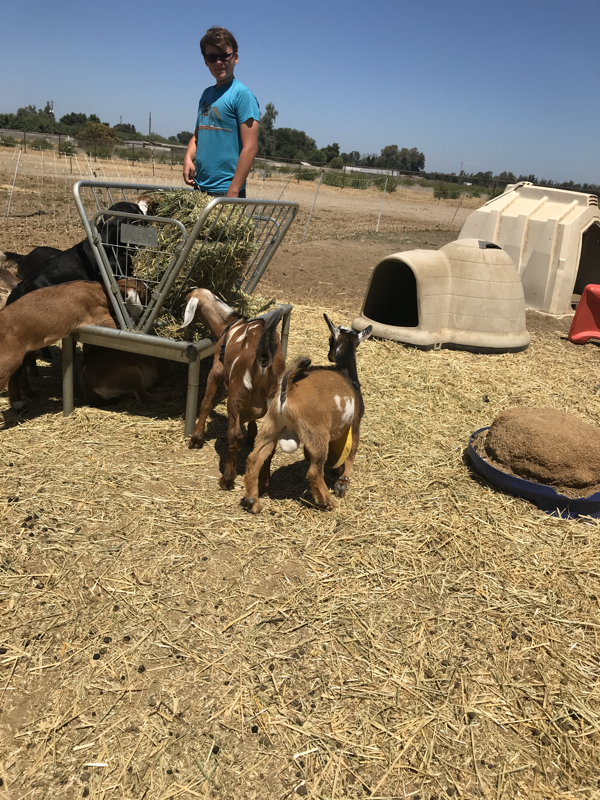
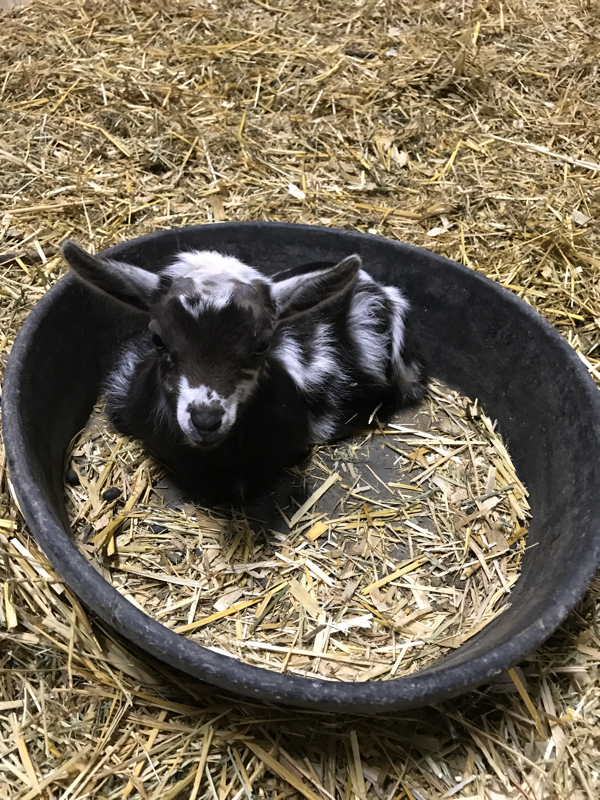
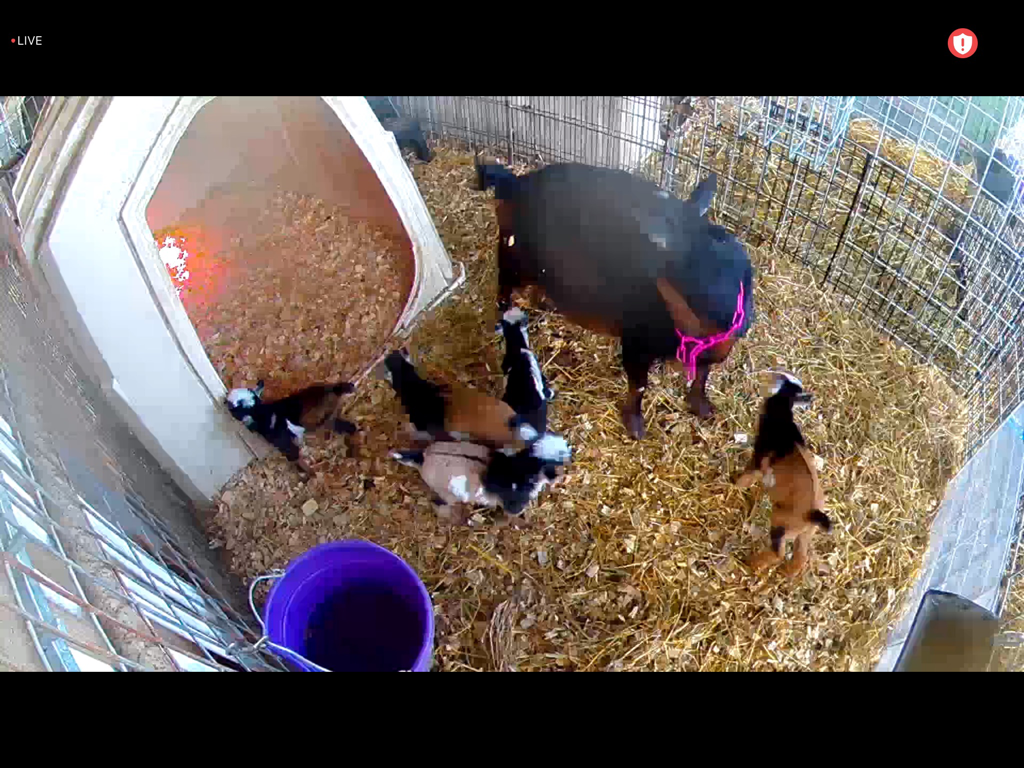

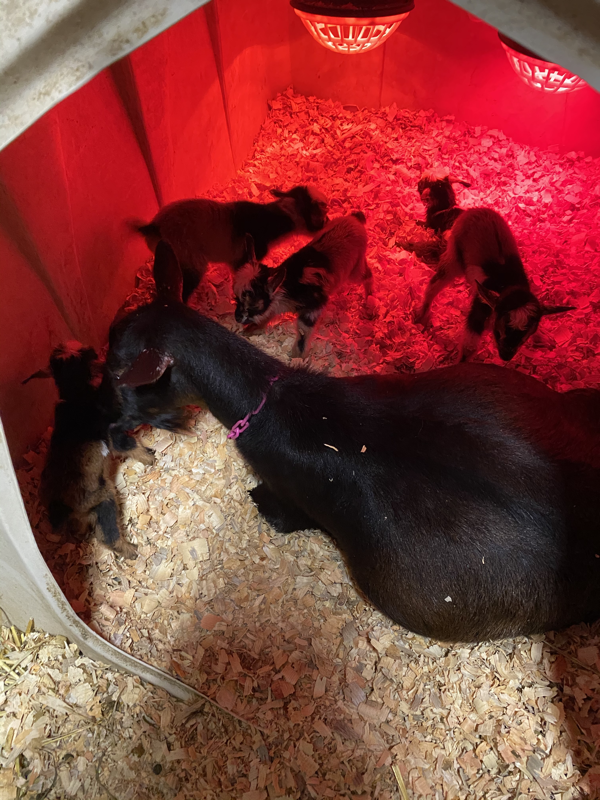



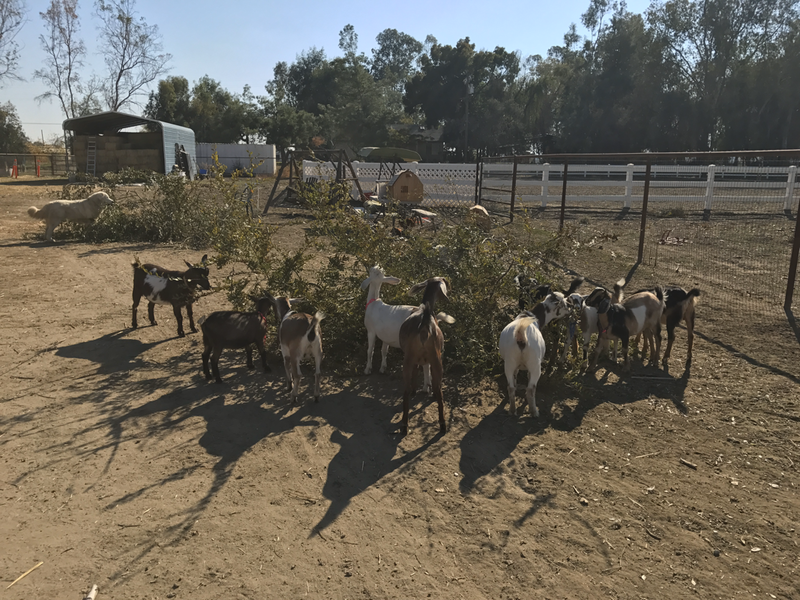



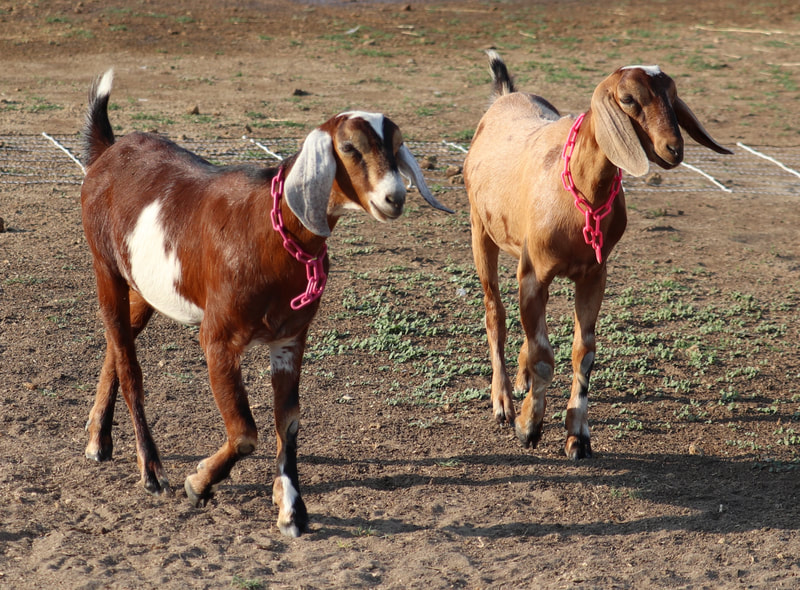






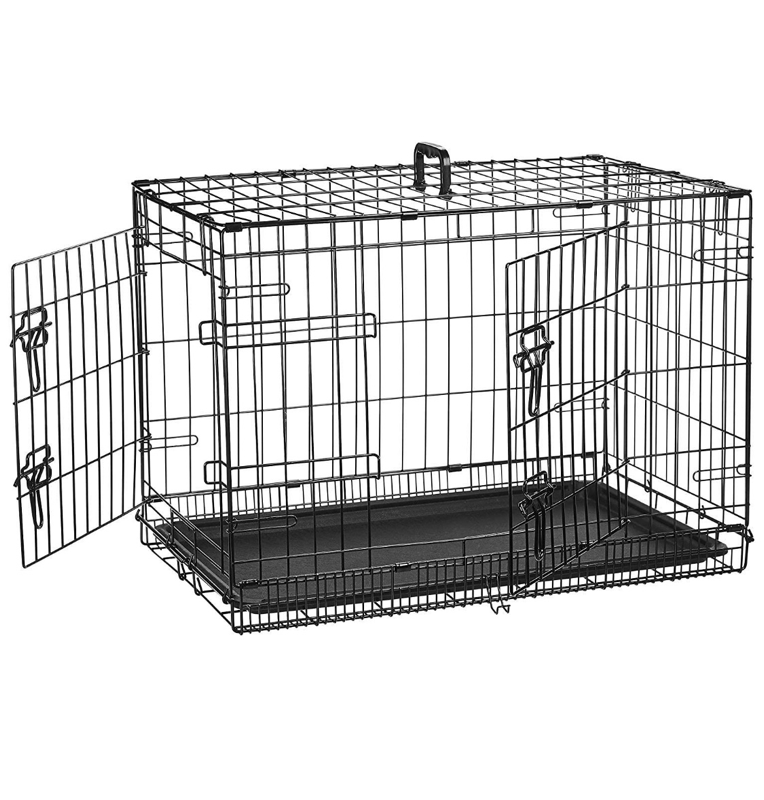
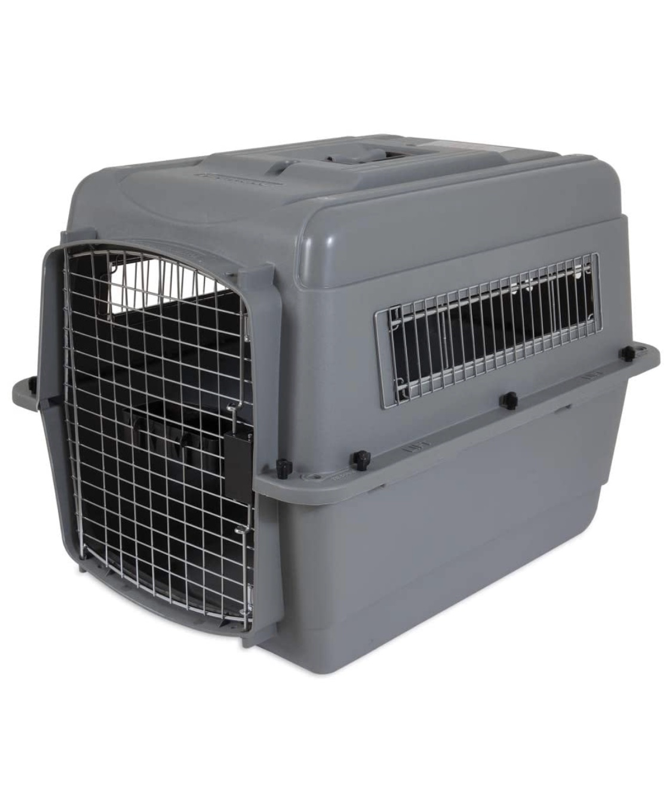
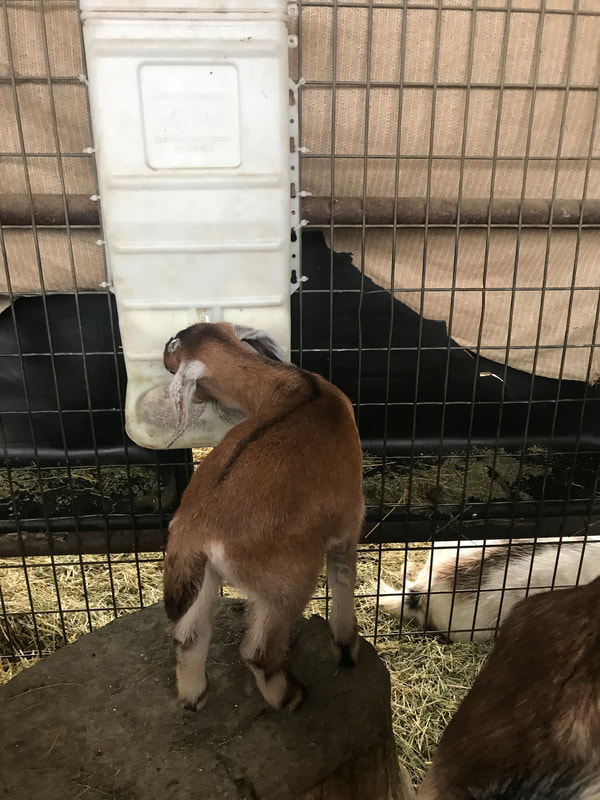

 RSS Feed
RSS Feed




